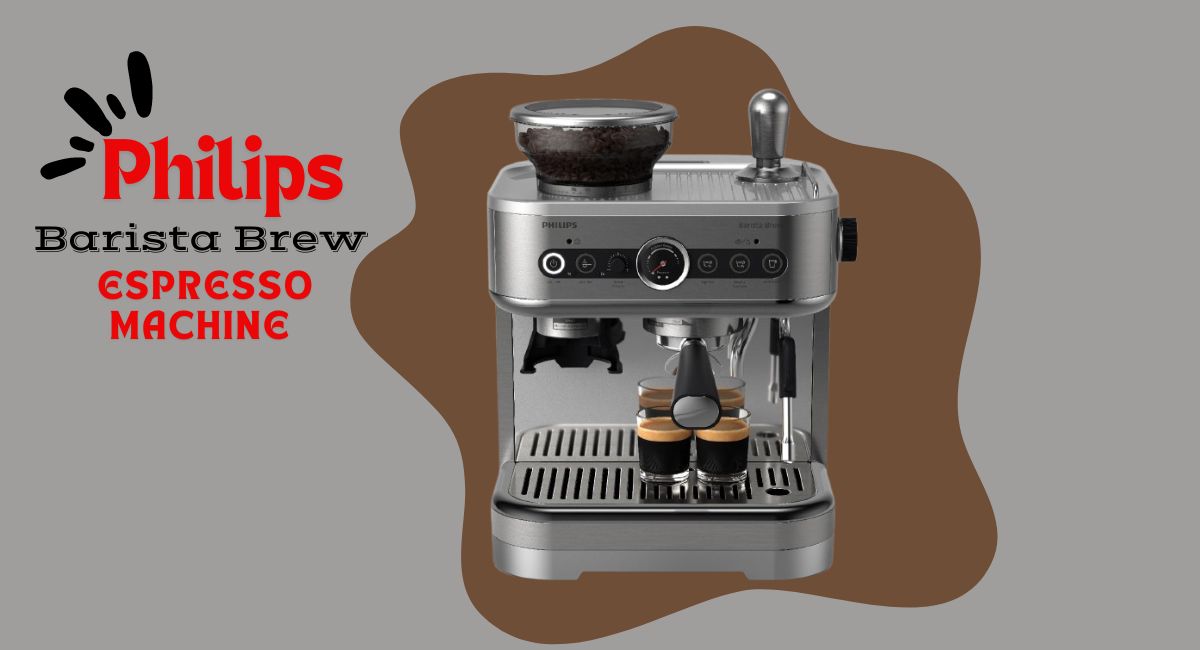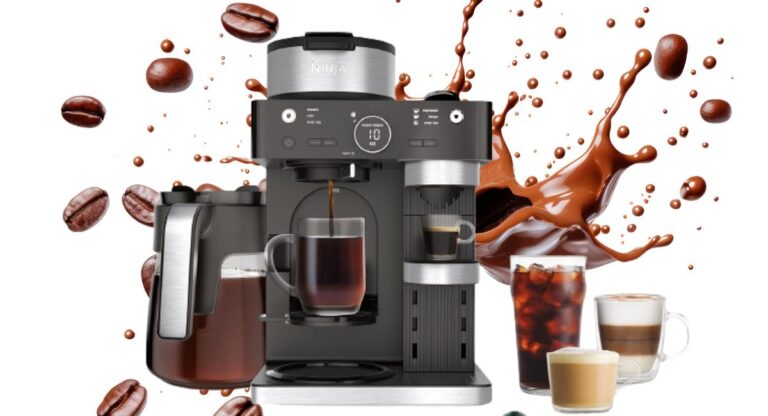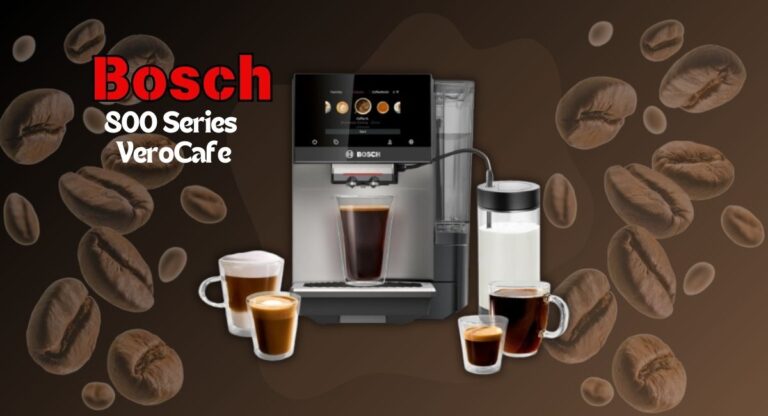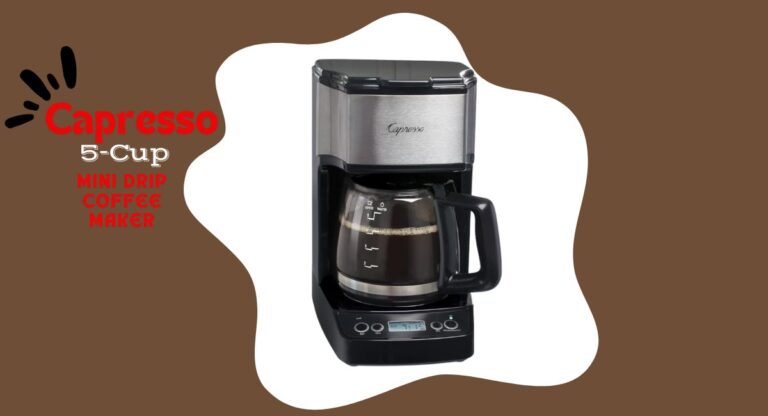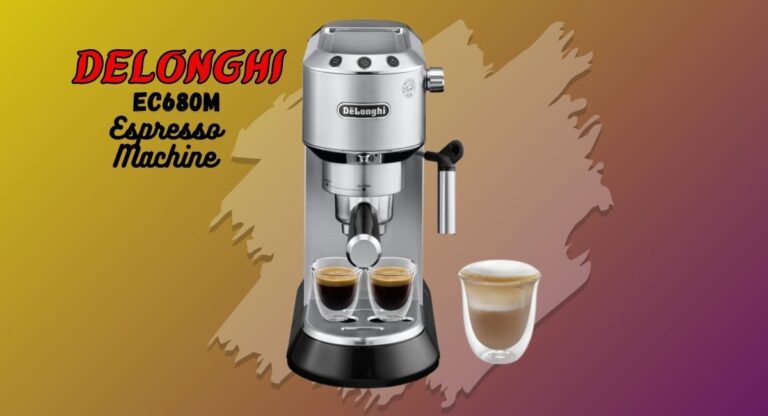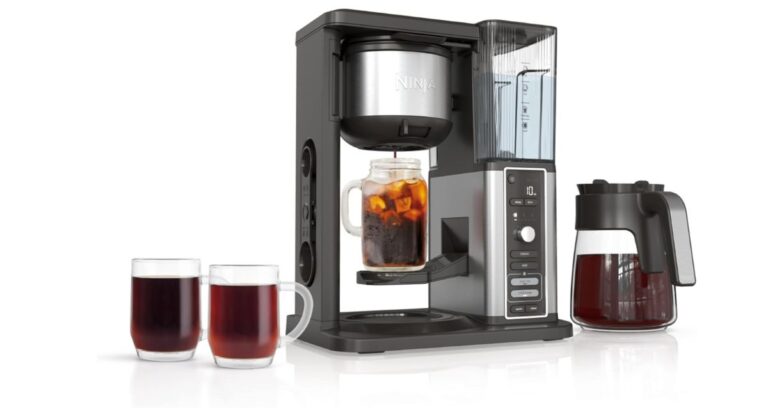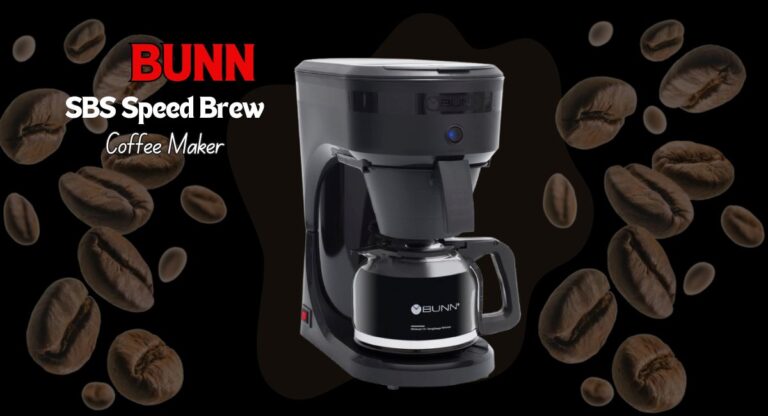Philips Barista Brew Espresso Machine Review
If you’re a coffee lover like me, you know that having the right equipment can make all the difference in brewing the perfect cup. The Philips Barista Brew Espresso Machine caught my eye for its promise of delivering café-quality espresso right at home.
In this review, I’ll share my experience using the Barista Brew, covering everything from its design and performance to how it holds up against other machines in its price range.I hope this review helps you decide if the Philips Barista Brew is the right fit for you.
Reasons to Buy
- Beautiful and compact design
- Easy to use interface
- Built in temperature guide mag
- Cleaning is also not hard
- Price is also affordable
- Coffee taste is good
Reasons to Avoid
- The milk forther doesn’t have good pressure
- Its grinder has limited customize setting
Overall Design and Size
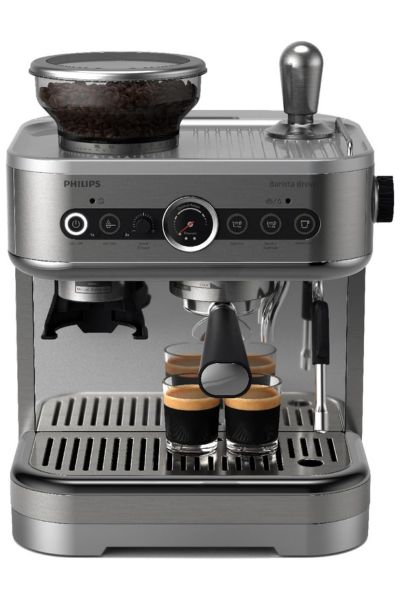
To start with, I’ll be honest—it’s not the most stylish espresso machine out there. It has a metal casing, which is nice, but the overall look is somewhat plain. This is especially true when you notice the strip of black plastic that holds the plastic buttons. It doesn’t give off a high-end vibe. In fact, it resembles a more affordable version of the Breville Barista Express. But, surprisingly, both machines are priced quite similarly. I’ll go into more details about the differences between the two later in this review.
Despite its appearance, the Philips Barista Brew Espresso Machine is compact and thoughtfully designed. It has a footprint of 12.6 inches (32 centimeters) in width and stands 13.15 inches (33.4 centimeters) tall. This makes it easy to fit under most overhanging kitchen cabinets, which is a big plus if you’re short on counter space.
However, there’s a small drawback with the water tank. The machine’s 77.7-ounce (2.3-liter) tank is located at the back, which can make it a bit tricky to reach. If you have to refill or clean it, you might find it slightly inconvenient. The tank is also quite narrow, which means cleaning it thoroughly could be a challenge. Another thing to note is the cup clearance. The space for your cup is relatively small, with a maximum height of just 3.7 inches (9.4 centimeters). If you prefer larger cups or travel mugs, this could be an issue.
On the bright side, there are some nice features in the design. The machine comes with an anti-fingerprint coating, which helps keep it looking clean. There’s also a cup warmer on top, which is a nice touch for keeping your espresso at the right temperature. The drip tray is made from metal with a grate, adding a durable feel. Plus, the machine includes a designated hot water spout for making tea or americanos, which adds versatility.
In terms of weight, the Barista Brew is around 19 pounds (9 kilograms). This gives it a sturdy feel, but it’s still light enough that most people should have no problem moving it around when needed.
Control Panel
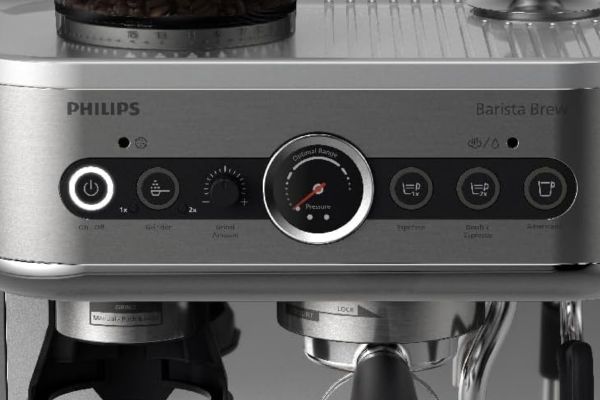
The control panel is positioned across the top of the machine, much like the Neretva and Teglu espresso machines. Thankfully, the layout is quite user-friendly, which makes operating the machine easy, even if you’re not very tech-savvy. The panel features a series of buttons, each with indicator lights, a pressure gauge to monitor the brewing process, and a knob for controlling steam and hot water.
The buttons themselves are clearly labeled, so you know exactly what each one does. You’ll find buttons for powering the machine on and off, controlling the grinder, selecting the grind amount, and choosing your drink options. The available drink options include the standard single shot and double shot of espresso. There’s also an extra button for making Americanos, which is a nice addition if you like a more diluted espresso.
There’s more to the control panel than meets the eye. For instance, the machine offers some hidden programming features that let you customize the brew temperature and the volume of your espresso shots. These options aren’t immediately obvious, but you can access them by pressing a specific combination of buttons. The user manual provides all the necessary details on how to use these settings, so it’s worth checking if you like to fine-tune your coffee experience.
Another great feature is the built-in grinder, which is similar to what you’ll find on the Sincreative Espresso Machine with Grinder. It allows you to grind fresh coffee beans directly into the portafilter, ensuring your espresso is as fresh as possible. However, there is no cradle to hold the portafilter in place while grinding. This means you’ll need to hold the portafilter yourself, which could be a bit inconvenient if you’re grinding large amounts of coffee or prefer a hands-free setup.
Overall, the control panel is straightforward and functional. It offers enough features for both beginners and more experienced coffee drinkers without being too complicated. The buttons are easy to understand, and the ability to adjust settings like temperature and shot volume is a nice bonus for those who want more control over their brew.
Built-in Grinder & Portafilter
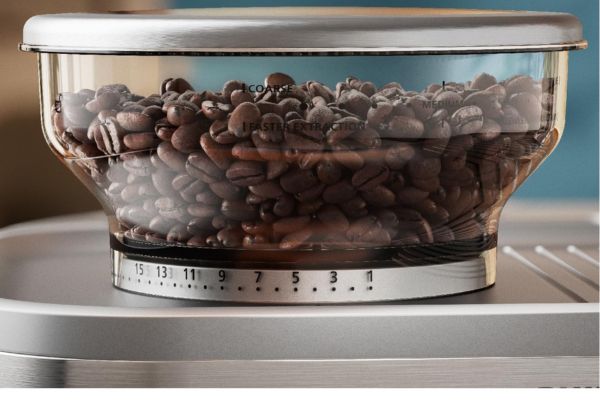
First off, the machine comes with a conical burr grinder, which is great for producing consistent grind sizes. However, it only offers 15 grind settings, which may feel a bit limited compared to more advanced espresso machines, like the Breville Barista Touch Impress. Those machines offer closer to 30 grind settings, giving you more control over the grind size for different beans and tastes.
One thing to note is that grinding on the Barista Brew can be a bit noisy. Instead of the low hum you might expect from a more luxurious grinder, this one gives off a high-pitched whining sound. It’s not unbearable, but if you’re grinding early in the morning, it might be something to keep in mind. On the plus side, the machine includes a funnel that helps you evenly distribute the coffee grounds without spilling them. This keeps things tidy and ensures a more consistent puck of coffee.
A feature I really like about this machine is the 58-millimeter stainless steel portafilter. For a mid-range machine, the portafilter feels quite professional. It’s well-made and durable, just like the ones used in higher-end espresso machines. That said, the handle of the portafilter is made of black plastic, which doesn’t match the high-quality feel of the rest of the portafilter. It looks a little cheap compared to the stainless steel, but this is more of an aesthetic issue rather than a functional one.
The portafilter comes with four different baskets. You get both pressurized and non-pressurized (or single wall) baskets for single and double shots. This is a great option for different types of users. Espresso fanatics usually prefer non-pressurized baskets because they allow for more control over the brewing process and produce more nuanced flavors. However, if you’re a beginner, pressurized baskets can be helpful. They’re more forgiving if you haven’t quite mastered the art of tamping your coffee grounds perfectly.
One extra accessory that I’m particularly impressed by is the dosing funnel that comes with the portafilter. This is one of my favorite espresso tools, and I’m thrilled that Philips includes it for free. The dosing funnel helps guide your coffee grounds into the portafilter without any mess, and it makes sure that your dose is even and precise.
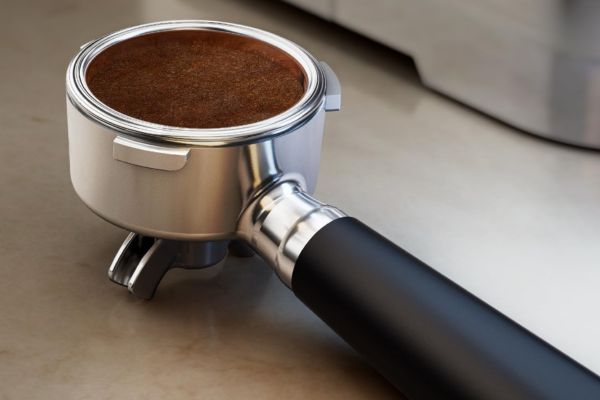
Lastly, the portafilter has a piece of rubber on the bottom. This small addition is really useful because it allows you to tamp your coffee directly on the countertop without worrying about scratching the surface of either the portafilter or your counter. It’s a thoughtful touch that adds to the overall user experience.
Milk Foaming
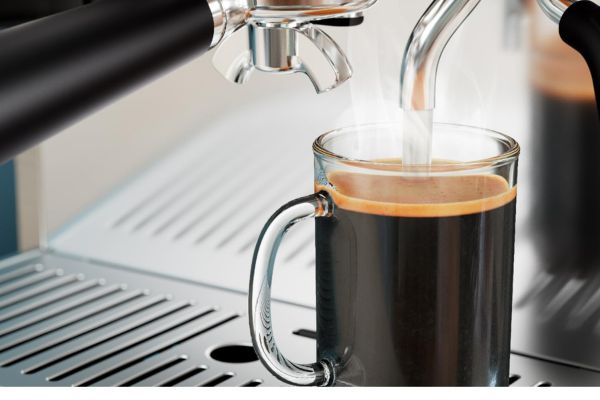
The machine comes equipped with a steam wand, which allows you to froth milk for drinks like cappuccinos and lattes. It does a decent job for a machine in this price range, though it may not be as powerful or as fast as higher-end machines. The steam wand can produce a nice, velvety microfoam if you know how to use it properly, which is essential for making latte art or achieving that smooth texture in your milk-based drinks.
One thing to keep in mind is that the steam wand is manual, meaning you’ll need to control the frothing process yourself. For some people, this can be a fun and rewarding experience, as it gives you more control over the texture and consistency of the foam. However, if you’re new to frothing milk, it might take a bit of practice to get the right technique down. You need to find the right angle and depth for the steam wand in the milk jug to get the best results. If you’re not familiar with frothing techniques, it may take a few tries to achieve the perfect foam, but it’s definitely doable with patience.
When it comes to the froth itself, the machine can create a thick, creamy foam that works well for most milk-based drinks. The microfoam it produces is smooth enough for lattes, while you can also get a denser frother for cappuccinos if that’s what you prefer. However, because the steam wand isn’t as powerful as those found on higher-end machines, it might take a little longer to froth the milk. If you’re used to a faster frothing experience, this could feel a bit slow.
In terms of consistency, the froth is good but not quite café-quality. More expensive machines tend to offer more steam pressure, which helps create a finer foam in less time. While the Philips Barista Brew does a decent job, it’s not going to match the texture or speed of those higher-end models. Still, for home use, especially if you’re just starting out, it does a good enough job to satisfy most users.
One positive aspect is that the steam wand is easy to clean. You can wipe it down after each use to prevent milk residue from building up. Some machines have steam wands that are tricky to clean, but this one is relatively low maintenance, which is a plus.
Espresso Performance
The espresso performance of the Philips Barista Brew Espresso Machine is impressive. It heats water quickly, which is always a plus when you’re eager for your morning coffee. In less than a minute, I had a rich, aromatic espresso filling my waiting cup. This efficiency is one of the things that stood out to me about this machine.
A key feature that really enhances the brewing process is the pre-infusion stage. Pre-infusion is important because it helps extract the most flavor from each shot of espresso. During this stage, the machine moistens the coffee grounds before applying full pressure. This ensures that the flavors are fully developed, leading to a more balanced shot.
As the espresso brewed, I kept an eye on the pressure gauge. I found it reassuring to see that the little arrow remained steady in the middle of the “optimal pressure” range. This indicated that the machine was working efficiently and effectively. I didn’t have to worry about any complicated settings or adjustments. The overall brewing process was straightforward and intuitive. Compared to other espresso machines I’ve used, which often require a lot of trial and error, this machine felt much simpler. It’s designed with beginners in mind, so as long as you follow the directions, you should have no trouble making great espresso.
For those who enjoy customizing their espresso, this machine has several adjustable features. You can modify the drink volume, temperature, and even the water hardness to suit your preferences. However, I did find that navigating these adjustments can be a bit tricky. Having the manual on hand is definitely helpful when you want to explore these options.
One particularly great feature is the Americano setting. This allows you to make a longer black coffee without needing to use the steam wand. Instead of manually dispensing hot water into your espresso, this setting simplifies the process. This versatility is something that many semi-automatic espresso machines don’t offer.
Coffee Taste
The taste of coffee made with the Philips Barista Brew Espresso Machine is truly delightful. Right from the first sip, you can appreciate the rich flavors that come through. The espresso is well-balanced, with a robust body that feels satisfying on the palate. The pre-infusion process plays a significant role here, allowing the coffee grounds to bloom and release their full flavor potential.
The crema, that golden layer on top of the espresso, is thick and velvety. It adds a luxurious mouthfeel and enhances the overall taste experience. I noticed a nice blend of sweetness and bitterness, which is what you want from a quality espresso. The subtle notes of chocolate and caramel were particularly enjoyable, making each cup feel like a little indulgence.
One of the great aspects of this machine is its ability to customize the drink temperature and volume. This means you can tailor your coffee to your liking, whether you prefer a hotter brew or a larger cup. Adjusting the grind settings also allows for different flavor profiles. A finer grind typically leads to a more intense flavor, while a coarser grind can mellow the taste a bit.
How to Clean
Cleaning the Philips Barista Brew Espresso Machine was a pretty straightforward process, though it took some time. I found that keeping up with the cleaning regularly made a big difference in how smoothly the machine operated. Here’s what I did after using it for a few days.
First, the drip tray needed attention. After a few uses, it was already filling up with water and coffee spills. It’s a metal tray with a grate on top, so I slid it out easily. It was heavier than I expected because it had collected quite a bit of liquid. I gave it a quick rinse under warm water, wiped it down with a cloth, and let it dry. It’s something I realized I’d have to keep an eye on to avoid overflow. Thankfully, because it’s metal, there were no stains, and it didn’t feel flimsy at all.
Next was the water tank. It’s located at the back, so I had to pull the machine forward to access it. I could see how this might be annoying if you’ve got the machine under a cabinet like I do. The tank itself holds a lot of water, but it’s quite narrow. I ended up using a sponge with a handle to clean the inside, which wasn’t the easiest task, but it did the job. After rinsing it out, I dried it thoroughly before refilling it and popping it back into place.
The portafilter was another part that needed cleaning after each use. After pulling a shot, I knocked out the used coffee grounds into the bin. The portafilter is stainless steel, so it was easy to rinse under the sink. I made sure to dry it carefully to avoid water spots or any rust developing over time. The baskets—especially the non-pressurized ones—also needed a rinse to make sure no coffee oils stuck to them. It didn’t take long, but it’s something you can’t skip if you want to keep everything in good shape.
Then came the steam wand. I froth milk regularly, so I knew this part would need attention. Right after frothing, I wiped the wand with a damp cloth to get rid of any milk residue. I made sure to run a quick blast of steam afterward, which helped clear out any milk inside. I’ve learned that if you don’t do this, the milk can dry and harden, which makes cleaning a lot harder later on. Once in a while, I soaked the tip in warm water to give it a deeper clean and ensure nothing was clogging it.
The built-in grinder was a bit more involved. Coffee grounds can get stuck in the grinder, so I took a small brush to sweep out any leftover grounds. It wasn’t too bad, but I could see that if I didn’t do this regularly, it might affect the flavor of future brews. I also wiped down the exterior where grounds sometimes spilled over when I was grinding.
Finally, I knew I had to run a cleaning cycle. The machine’s manual gave clear instructions on how to do it. I ran some cleaning solution through the machine to remove coffee oils and buildup inside. Descaling was another step I planned to do soon, as I have hard water in my area. It’s something I’ll have to do every few months to prevent mineral buildup, which can affect performance.
Noise Level
The Philips Barista Brew Espresso Machine has a moderate noise level during use. When I first turned it on, the built-in conical burr grinder was noticeably the loudest part of the machine. It produces a high-pitched whining sound while grinding the coffee beans. It’s not deafening, but it definitely caught my attention, especially early in the morning when everything else is quiet.
Once I started brewing, the noise level dropped to a steady hum from the pump. This part was much more subdued and didn’t interfere with my conversations or morning routine. I found it to be a reasonable sound that blended into the background.
When I used the steam wand for frothing milk, I noticed a soft hissing noise. It’s typical for espresso machines to make this sound, and while it can be a bit louder when frothing larger amounts of milk, it wasn’t disruptive. Overall, while the Barista Brew isn’t silent, it operates at a level that’s suitable for home use. It allows me to enjoy my coffee-making experience without too much distraction from noise.
Final Verdict
After spending some time with the Philips Barista Brew Espresso Machine, I can confidently say it’s a solid choice for anyone wanting to make great espresso at home. First off, the design is straightforward and user-friendly, making it easy to navigate, even for someone like me who isn’t a seasoned barista.
The built-in grinder is a fantastic feature. I really appreciate being able to grind fresh beans right before brewing. The espresso it produces is rich and flavorful, thanks in part to the pre-infusion process. This feature makes a noticeable difference, extracting more flavor from the coffee grounds.
Using the steam wand is also a breeze. I enjoyed frothing milk for lattes and cappuccinos, and the results were impressive. It adds versatility to the machine, allowing me to whip up a variety of coffee drinks without needing multiple machines.
One thing I found particularly appealing was how quickly the machine heats up. In less than a minute, I was ready to brew my espresso, which is a big plus when I’m in a rush. The pressure gauge is a nice touch too; it helps me ensure I’m in the optimal brewing range without guessing.
While the PHILIPS Barista Brew Semi Automatic Espresso Machine doesn’t have all the bells and whistles of some pricier models, it delivers consistent performance without overwhelming complexity. Cleaning it is pretty easy, which is a must for me.
In short, the Philips Barista Brew Espresso Machine has been a fantastic addition to my kitchen. It offers quality, convenience, and a rewarding coffee-making experience. If you’re looking for a reliable espresso machine that won’t break the bank, I highly recommend giving this one a try. It’s perfect for both beginners and those looking to refine their espresso skills.

